History of Ternopil
Foundation of Ternopil (Tarnopol)
Ternopil was first mentioned in 1540, when the Polish king Sigismund I issued Jan Tarnowski, a Polish nobleman and statesman, a charter to found a new town with a fortress on the banks of the Seret River. It was supposed to protect the southeastern borders of the Polish kingdom from the Crimean Tatar raids. The construction of the Tarnopol fortress lasted eight years. In a rebuilt form it has survived to this day.
In 1548, Jan Tarnowski obtained permission from the king to build a pond between the banks of the Seret River, in the place where you can see it today. In the same year, Tarnopol received the Magdeburg Law, residents got exemption from taxes for 15 years and had the right to organize three fairs a year. The town began to develop as a center of commerce on the route running from west to east. Throughout the second half of the 16th and 17th centuries, Tarnopol suffered from the raids of the Crimean Tatars.
Tarnopol was one of the key towns in the fight for Galicia during the Khmelnytsky Uprising (the Polish-Cossack war) of 1648-1657. During the Polish-Ottoman war of 1672-1676, Ottoman troops under the command of Ibrahim Shishman Pasha captured Tarnopol, destroyed the fortress, church, water mills, drained water from the pond, and plundered the town.
More historical facts…
Tarnopol in the 18th-19th centuries
In 1772, as a result of the first partition of Poland, Tarnopol became part of the Habsburg Monarchy (the Austrian Empire since 1804). It was the county center of the Kingdom of Galicia and Lodomeria, a new province of the Habsburg state. In 1808, about 7 thousand people lived in Tarnopol.
In 1809, during the War of the Fifth Coalition, Tarnopol was occupied by Polish troops, and after the war, in accordance with the Treaty of Schonbrunn, the town passed to the Russian Empire and became the center of Tarnopol Krai.
In 1812, during the French invasion of Russia, Tarnopol was occupied by the advancing French army. In 1815, by the decision of the Vienna Congress, Tarnopol was again transferred to the Austrian Empire. The great fire of 1832 destroyed most of the town, the majority of its wooden houses burned down. In 1836, Tarnopol received the right to organize 12 fairs a year. In 1844, the Austrian Emperor Ferdinand I granted Tarnopol the coat of arms and the status of a free royal town. In 1850, about 13 thousand people lived in Tarnopol in 1,350 houses.
In the second half of the 19th century, the development of Tarnopol was facilitated by the construction of new communication ways. In December 1870, the railway connected Tarnopol with Lemberg (Lviv). In 1890, the city’s population was 26,217 people (mostly Poles and Jews). Tarnopol had a steam mill, a brickyard, a brewery, a Polish gymnasium, a school, a Polish-Russian teacher’s seminary, a Jesuit collegium, and numerous trading establishments.
Tarnopol in the first half of the 20th century
In August 1914, during the Battle of Galicia of the First World War, Tarnopol was occupied by Russian troops, who stayed in the city until July 1917. November 13, 1918, in Galicia, after the collapse of the Austro-Hungarian Empire, the West Ukrainian People’s Republic was proclaimed. From November 22 to the end of December 1918, there were state institutions of the West Ukrainian People’s Republic in Tarnopol.
In September 1919, during the Polish-Ukrainian war, Tarnopol was occupied by Polish troops. In July 1920, during the Soviet-Polish war, the city was occupied by Soviet troops and became the administrative center of the Galician Soviet Socialist Republic. In September 1920, it was again captured by Polish troops. In 1921, according to the terms of the Treaty of Riga, the city and all of Eastern Galicia came under the control of Poland. Tarnopol became the center of the Tarnopol Voivodeship.
In 1939, the population of Tarnopol was about 50 thousand people. On September 17, 1939, according to the Molotov-Ribbentrop Pact, the Red Army entered Tarnopol. The city became part of the Ukrainian Soviet Socialist Republic within the USSR. On December 4, 1939, Tarnopol became the center of the newly formed Tarnopol Oblast.
On July 2, 1941, the city was occupied by German troops. In 1944, Tarnopol was turned into a major German defense center, the garrison of which was about 12 thousand people. On March 23, 1944, the battle for Tarnopol began. On April 15, 1944, Tarnopol was again occupied by the Red Army.
During battles and the period of German occupation, Tarnopol suffered significant damage. The Germans dismantled and removed 29 industrial enterprises, and blew up the rest; 2.5 out of 4.2 thousand houses in the city were completely destroyed, and the rest were damaged. During the German occupation of Tarnopol, more than 20 thousand civilians were killed, of which about 19 thousand were Jews.
On August 9, 1944, Tarnopol was renamed Ternopil. This was done on the proposal of the Presidium of the Supreme Soviet of the Ukrainian Soviet Socialist Republic in accordance with the decree of the Presidium of the Supreme Soviet of the USSR “On the clarification of the names of cities: Tarnopol, Chernovitsi, Kamenetz-Podolsk, Vladimir-Volynsk, Chertkov of the Ukrainian SSR”.
Ternopil in the second half of the 20th century
During the 1950s and 1960s, a large-scale rebuilding of Ternopil was carried out. In 1951, the Park of Culture and Recreation named after Taras Shevchenko was laid. The Ternopil pond was reconstructed, as a result of which its area increased to 400 hectares. At the same time, several religious buildings were destroyed.
According to the 1959 census, 52,245 people lived in Ternopil. During the post-war years, Ternopil became an industrial center. In 1959, a machine-building plant was opened (since the 1970s - a combine-harvester plant), in 1962 - a plant for reinforced concrete structures, in 1968 - a cotton mill.
Ternopil also became an educational center. During the 1950s-1960s, higher educational institutions were created, which became the basis for today’s universities: medical (1957), technical (1960), economic (1966), pedagogical (1969).
In 1989, according to the last Soviet census, 204,845 people lived in Ternopil. In the late 1980s and early 1990s, Ternopil became one of the centers of the Ukrainian national revival, which culminated in the proclamation of Ukraine’s independence on August 24, 1991. In 1992, the current coat of arms of Ternopil was adopted.
Street life in the historical center of Ternopil
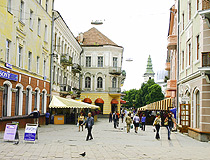
Pedestrian street in Ternopil
Author: Vladimir Zaranok
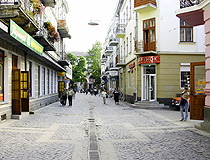
Cobbled street in Ternopil
Author: Vladimir Zaranok
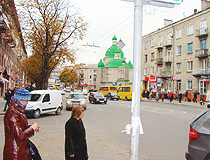
Architectural diversity of Ternopil
Author: Tvardovskiy M.
Ternopil - Features
Located in the very center of western Ukraine, on the banks of the Seret River, Ternopil combines the unique flavor of Galicia with Austrian architecture, the beauty of Podolia and the tranquility of Volhynia. The average height of the city above sea level is about 320 meters. The City Day of Ternopil is celebrated on August 28.
The founding of towns in the Kingdom of Poland and the Commonwealth took place on the basis of royal privileges. Quite often the founder gave the town his name. Ternopil (originally Tarnopol) was founded by the Polish nobleman Jan Amor Tarnowski. Hence the name of the town coming from the surname of the founder and the Greek ending “-pol” (“town”). In turn, this surname is derived from the name of their family town - Tarnow. The towns of Tarnobrzeg and Tarnogrud founded by them are also named after the Tarnowskis.
It is also worth noting that the first coat of arms of Tarnopol was a variant of the Polish noble coat of arms of Leliwa, which was used by Jan Amor Tarnowski. On today’s coat of arms of Ternopil, in addition to the historical coat of arms of Leliwa (a golden six-pointed star above the crescent with horns up), you can see a stylized image of the Old Castle of Tarnopol.
Ternopil is an important transport hub of Ukraine. The climate of Ternopil is temperate continental, with warm, humid summers and mild winters. The average air temperature ranges from minus 3.4 degrees Celsius in January to plus 20 degrees Celsius in July.
During the Second World War, the city was seriously damaged. A lot of preserved monuments of architecture, history and culture have features of eclecticism and modernity. The most picturesque architectural ensembles are located in the central part of the city, which today is almost completely given over to pedestrians.
A walk through the center of Ternopil will be a real journey into the past, because over the past hundred years the architecture of these streets has not changed much. Valova Street is considered one of the most beautiful and lively streets. This is where most tourists go to see old architectural monuments.
This city is the center of the region famous for its castles, waterfalls, caverns, and rivers. It is the starting point of rafting routes along the Dniester Canyon, tours to the Ternopil caverns, to the Dzhurynskyi (Chervonohorodskyi) waterfall, the most powerful waterfall in Ukraine.
Main Attractions of Ternopil
Ternopil Pond - a beautiful natural attraction located in the very center of Ternopil. This artificial pond with an area of over 300 hectares is the same age as the city. The first pond was created after the construction of the Ternopil Castle in 1548. Around the pond there are a lot of picturesque parks and alleys. Residents and visitors of Ternopil like to walk here, enjoying magnificent views and unity with nature. Here you can rent a yacht, ride jet skis, catamarans, and boats.
Around the pond there are hotels and various establishments for recreation. It is also worth noting that the Ternopil Pond officially acquires the status of the largest skating rink in Ukraine in winter. Its area reaches over 4,000 square meters! Therefore, for Ternopil, this pond has the same meaning as the Dnieper River for Kyiv, or the Black Sea for Odesa. It is impossible to imagine Ternopil without this unique reservoir.
Taras Shevchenko Park - the main park of Ternopil located on the southeastern shore of the Ternopil Pond. Quiet shady alleys, a small artificial reservoir, two islets (“Seagull” and “Island of Lovers”), light arched bridges, a cascade fountain, sculptures, a spacious promenade by the Ternopil Pond, numerous green spaces give the park a special charm and make it one of the most popular walking places in Ternopil.
The most beautiful part of the park with hills and European-style trimmed lawns is called “Champs Elysees” by the locals. Here you can have a picnic, get-togethers with friends, play outdoor games, and listen to street musicians.
Topilche Hydropark. In 1985, a picturesque hydropark with an area of about 100 hectares was opened to the south of the Ternopil Pond. It is named after the settlement that existed on this site before the founding of Ternopil. You can find beautiful streams, canals, bridges, water mills, a Cossack island, a Slavic pagan temple, fountains, and even a mini zoo here.
Cathedral of the Immaculate Conception of the Blessed Virgin Mary (1749-1779) - a beautiful large Greek Catholic church built in the late European Baroque style as the Church of St. Vincent at the monastery of the Dominican Order. Hence the second name of this monument of the history of Ukraine of national importance and one of the architectural symbols of Ternopil - the Dominican Church. The cathedral is located in the historical center of Ternopil. You can also climb the bell tower of this church or go down to its dungeon. Het’mana Sahaidachnoho Street, 14.
Cathedral of the Nativity (1602-1608) - an amazingly picturesque church and one of the oldest places of worship in Ternopil. It has a very unusual appearance and looks more like a fortress than a religious building. It is also interesting that inside the church looks much smaller than it seems from the outside. It is richly decorated with frescoes and bas-reliefs. Here you can see an important religious object - the icon of the Ternopil Mother of God. Rus’ka Street, 22.
Ternopil Regional Museum of Local Lore - the largest collection of exhibits on nature, history and life of Ternopil Oblast, the oldest institution of culture and education in the region. The collections of clothing of the local population, fine and decorative arts, numismatics, philately, documents and photographs, and household items are particularly large.
The most important exhibits of this museum are archaeological artifacts, old weapons, icons of the 17th - early 19th centuries, books of the Pochayiv Lavra of the 17th - 18th centuries, carpets of weaving workshops of the 19th century, allegorical sculptural compositions created by the Baroque-Rococo sculptor Johann Georg Pinsel in the middle of the 18th century. Heroyiv Yevromaydanu Square, 3.
Ternopil Regional Art Museum. This museum has three exhibition halls. The first hall is dedicated to Ukrainian art: paintings, graphics, carvings of Galicia of the 18th century and sacred art of the 19th-20th centuries, unique works of the Ukrainian baroque of the mid-18th century, the works of Ukrainian landscape painters, as well as artists who were born and worked in the Ternopil region. The second hall presents Western European graphics. The third hall is dedicated to the Ukrainian painter, architect and restorer Dionysius Sholdra. Krushel’nyts’koi Street, 1.
Restaurant-Museum “Staryy Mlyn” (“Old Mill”) - one of the most popular restaurants in Ternopil, which occupies four floors of a very picturesque Gaudi style building constructed on the foundation of a mill that functioned here until the end of the 1940s. The premises inside and outside are decorated with about 3 thousand antiques of folk life, traditions and customs. This is a great place to taste traditional Ukrainian cuisine. Brodivs’ka Street, 1?.
Monuments to the Plumber, the Invisible Man and the Chair. This complex of three humorous monuments was opened in the center of Ternopil, near the shopping and recreation center “Atrium” in 2010. Two of them are dedicated to famous literary works, and the third one - a worker of public services.
The monument to the 12th chair is inspired by the classic satirical novel “The Twelve Chairs” (1928) by the Odesan authors Ilf and Petrov. The plot of this novel follows characters attempting to get jewelry hidden in one of twelve identical chairs. The monument to the invisible man refers to the novel of the same name by Herbert George Wells. The monument to the plumber is dedicated to the employees of the Ternopil water utility. Yosyfa Slipoho Street, 5/6.


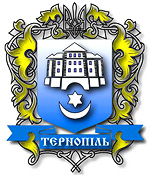



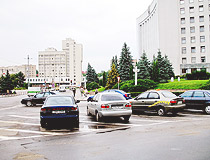
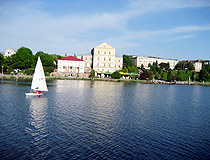
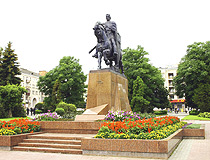
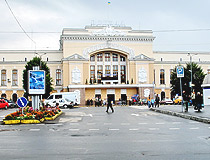
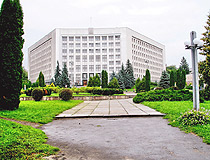
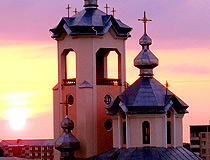
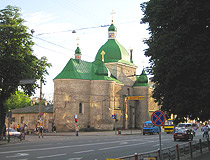
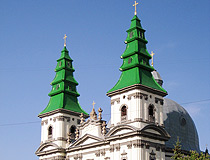
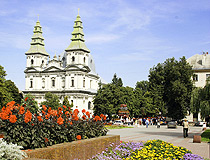
The comments of our visitors
All 6 comments